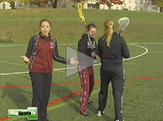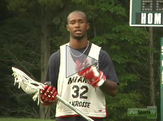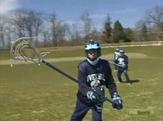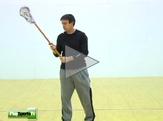PlaySportsTV Lacrosse
Lacrosse Tips for Winning the Face-off
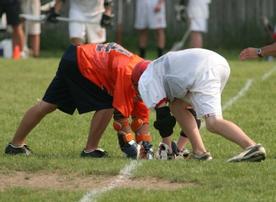
Practicing lacrosse stick skills leads to winning face-offs.
Make it a group effort as your lacrosse team gains possession
By Craig Haley
PlaySportsTV Managing Editor
Boys’ lacrosse teams often rely on talented face-off players, but the latter don’t fly solo. They need two, good wing men who help secure possession of the ball.
Brooks Matthews, who coaches the Gilman School (Baltimore) boys’ lacrosse program that has been ranked No. 1 nationally, says youth lacrosse coaches must stress teamwork when they teach face-offs, which are contested at midfield at the start of every quarter and after every goal.
“I think wing play often gets underrated. I think wing play is really important in face-offs,” Matthews says. “Understanding how to play on the wings and understanding how to involve your wing guys if you’re a face-off guy or how to involve yourself if you’re a wing player” is important.
Strong face-off players have to be competitive and willing to grind out the one-on-one face-offs with winning techniques.
A face-off player relies on getting the ball with one of two moves: the clamp, in which he twists his right wrist downward and puts the basket of his lacrosse stick on the ball, thrusting it to his left side to scoop it up, or the rake, in which he thrusts his lacrosse stick up against the ball and pulls it out to his left side to scoop up.
Not all face-offs are won by face-off players, however. Often the ball comes out behind him, so the wing men, like the face-off player, need to be aggressive and quick to secure it.
Matthews recommends that teams use a balanced alignment between the face-off player and his wingmen. “You don’t want to have three guys going for the same ball, you want to have good spacing, like you want to have spacing in almost anything,” he says.
“Once the ground ball is picked up, they can move it quickly. Or if the other team gets it, they can understand how to not give in. … You can hound a guy who gets a ground ball.”
To practice face-offs, Matthews recommends using a step-by-step process. A player will learn a technique, go through it with repetition and add more steps, while also learning a counter move for when he doesn’t get the ball.
For a warm-up drill, a face-off player can practice “topping” the ball, where for about 30 seconds he takes the head of his stick, reaches over the ball and touches the ground on both sides of the ball as fast as he can.
He will continue drilling with progression. If a player is developing the clamp, use this progression: down position, coach’s whistle, clamp; down, whistle, clamp, step with the right foot; then down, whistle, clamp and step with both feet.
One of Matthews’s favorite lacrosse drills develops lower-body strength. Instead of starting in the face-off position, pit the face-off players back-to-back, almost butt-to-butt. Place the ball on the ground between them. When the coach blows his whistle, the players try to push each other back and off the spot. “You can’t pick up the ball until the ball’s in front of you,” Matthews says.
Matthews also matches two players in the face-off position without a ball. At his whistle, the players battle as if there is a ball and then Matthews rolls it in and the players must scoop up the ground ball.
“You kind of build up to things,” Matthews says. “I think that that’s important, that you sort of break down the skill into parts and you drill those parts and then you add things in so you’re drilling the whole.”
###
Instruct the best coaching techniques through PlaySportsTV lacrosse training plans.


